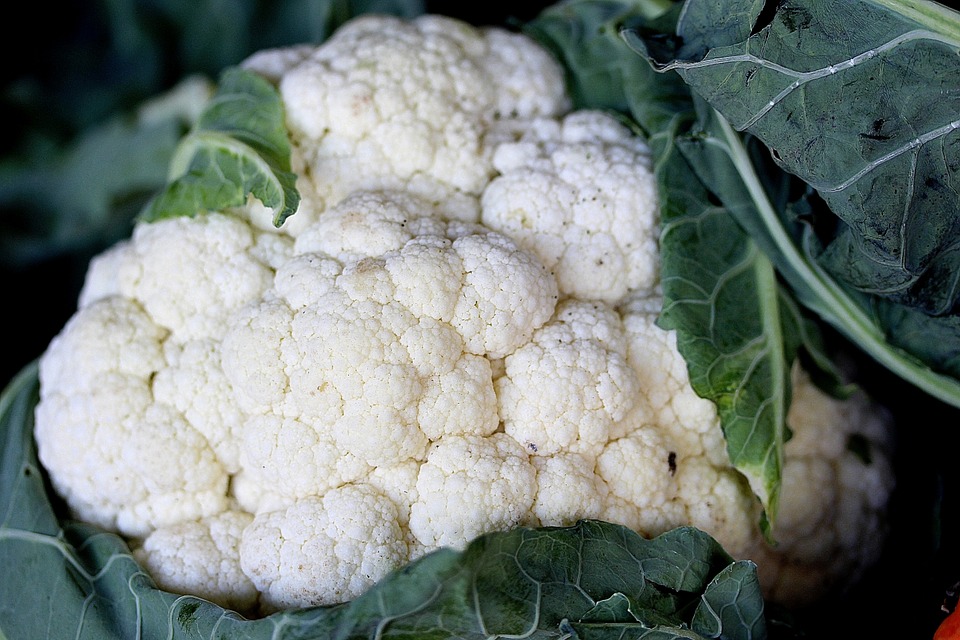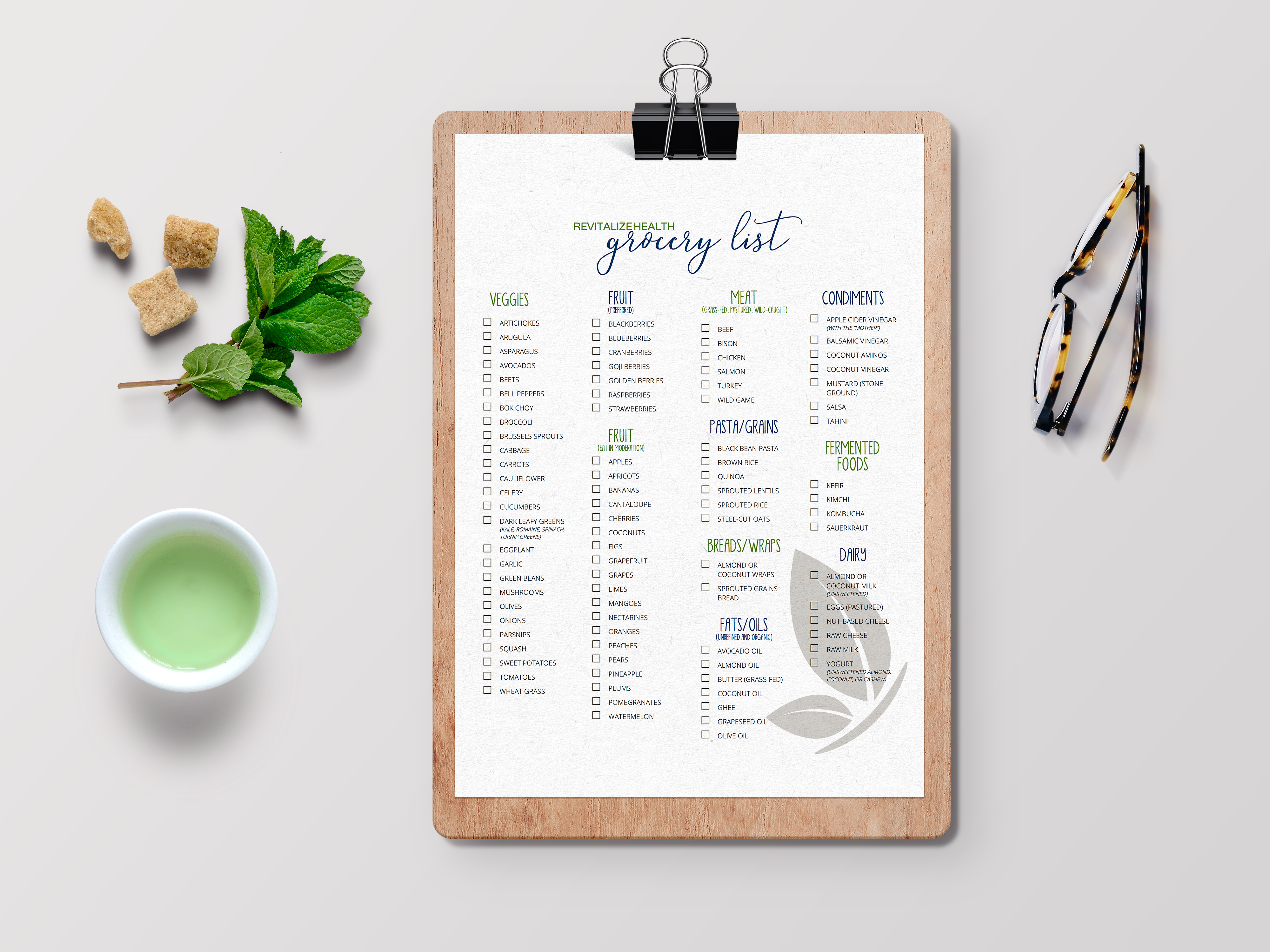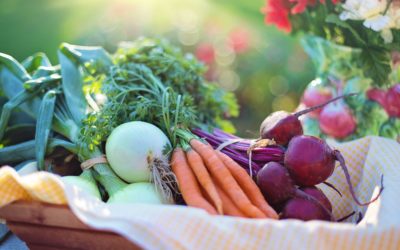HEALTHY LIVING & NUTRITION
The Ultimate Shopping Guide for Healthy Living

Jessy Turner
22 January 2018
For those who want to eat clean and have a healthy diet, navigating through products and aisles at grocery stores today can be overwhelming and difficult. Tricky marketing messages and labels don’t always convey the truth about what’s good for you, plus it’s hard to escape the trap of junk food on almost every aisle. This guide will give you the tools and lists needed to conquer your next store run and return home with great foods for your healthy lifestyle—without getting derailed or confused.
Successful shopping starts with knowing what to shop for and then only shopping those items. Going to the grocery store without a plan or making exceptions to your list can trip you up if you aren’t careful. Your grocers are smart. They know how to place items in the store to get your attention and encourage you to buy them. Unfortunately, they are more likely to market carrot cake to you than organic carrots.
By planning your meals and recipes ahead of time, knowing which items to generally keep available in your pantry, avoiding the store when hungry, and shopping with these tips in mind, you’ll succeed in every trip to the grocery store.
HOW TO SHOP EACH AISLE
One of the first things to understand when going grocery shopping is the importance of shopping the outside aisles. The outside aisles are where you will find the fresh, real food, which is what you want to eat most of. Try to shop the inside aisles minimally. Of course you will need to navigate through all of the aisles from time to time, but try to stock up on real food as a general rule and steer clear of any processed foods.
PRODUCE AISLE
The best option to buy here is organic and local. It is wise to opt for produce sourced within the U.S. versus other countries, as their farming and growing procedures may not be the same as ours. If you aren’t sure if certain produce is organic or conventional, an easy tip to remember is that if the PLU code starts with a 4, it is conventional, and if it starts with a 9, it is organic.
When shopping on a budget, it is helpful to be familiar with the Dirty Dozen / Clean Fifteen List from EWG. This list informs consumers of which produce has the highest residual pesticide and chemical content after farming and which produce has the least pesticide residue. As a general rule, you should always buy organic versions of the produce on the Dirty Dozen list, while buying conventional versions of the Clean Fifteen produce is acceptable. This can help save you some money at the store.
EWG’s 2017 Dirty Dozen:
Strawberries, spinach, nectarines, apples, peaches, pears, cherries, grapes, celery, tomatoes, sweet bell peppers, potatoes
EWG’s 2017 Clean Fifteen:
Sweet corn, avocados, pineapples, cabbage, onions, sweet peas, papayas, asparagus, mangoes, eggplant, honeydew, kiwi, cantaloupe, cauliflower, grapefruit

Cauliflower not only makes the Clean Fifteen list, it also makes a great tasting substitute for rice, mashed potatoes, and even pizza crust.
MEAT/POULTRY AISLE
When shopping meat, you always want to make sure it is organic and either grass-fed and finished (beef) or pastured (pork & chicken). Most companies raise their livestock on grain so that they bulk up faster for earlier slaughter and mass production. That process is also helped along by hormones and antibiotics, both of which cause environmental and health problems. Eating grass-fed or pastured meat is the healthiest option for you. Studies have found that it is lower in saturated fat, higher in omega-3s, and a good source of vitamins A and E.
SEAFOOD AISLE
Wild-caught is the way to go with seafood. It’s also best to choose fish that is sourced locally and within the U.S., if possible. Stay away from farm-raised fish, as they are fed fish meal that is mixed with corn and soy products to bulk them up at minimal cost. This leaves them loaded with toxins and potential side effects for those who eat them. If using canned tuna or salmon, look for wild-caught, water packed fish in BPA-free lined cans. Also, make sure there isn’t anything else added, such as salt, broth, or soy.
“Successful shopping starts with knowing what to shop for and then only shopping those items.“
GRAINS/BREAD/CEREAL AISLE
Generally, this aisle is not friendly to your healthy lifestyle, so exercise caution. Things you want to look for when shopping for these products are that they are organic and made with sprouted grains. Some grains that are nutrient-dense are quinoa, flax, chia, or amaranth. Always check to see if the cereal or bread contains refined grains, such as white flour, enriched flour, refined sugars, MSG, synthetic vitamins, or artificial flavors and colorings. Stay away from anything with those ingredients.
Be mindful that gluten-free doesn’t necessarily mean “healthy,” although we would encourage you to avoid gluten whenever possible. When looking for alternative, gluten-free products, consider items made from coconut, almond, cassava, or even oat flour.
DAIRY AISLE
Dairy products are important to buy organic, raw, and either grass-fed or pastured. Getting raw dairy, including milk, ensures that you avoid issues like added hormones, antibiotics, pesticides, fertilizers, and GMOs. When buying yogurt, avoid yogurts made from processed dairy or that include added sugars, artificial colors and flavors, and pre-mixed fruit. Opt for plain, raw yogurt or dairy-free yogurts made from coconuts, almonds, or cashews and then add your own fruit and nuts.
The best options for cheeses are organic and raw. Avoid shredded cheeses that often contain cellulose, which is an anti-caking agent. Nut-based cheeses are a great alternative to dairy if you cannot find raw cheese in your area. Butter should be organic and grass-fed. Avoid butter alternatives and sprays that contain GMOs. Finally, choose eggs that are organic and pastured/free-range. Be cautious of “cage-free,” “all-natural,” or “no added hormones” wording on egg cartons.
HOW TO UNDERSTAND TERMS & LABELS
Once you know what to look for on each aisle of the store, it is important to then read the labels on the products you purchase, even on organic products. They can often have hidden ingredients that are harmful, like MSG (monosodium glutamate), carrageenan, unhealthy oils (like canola), added sugars, and “natural flavors” that are generated in a lab. Just because ingredients have been approved by the FDA doesn’t mean they are safe. Many people think that what is allowed in processed food, such as artificial sweeteners, preservatives, and thickeners have gone through strict testing, but they usually haven’t. As you look at labels, here are some important tips you should know:
ALL-NATURAL
Typically, for products to be labeled “all-natural,” they cannot contain added colors, synthetic ingredients, or artificial flavors. However, they can still contain preservatives and GMOs. This term allows for lots of varied interpretation by the food companies and doesn’t mean that the food you eat is actually healthy.
NO SUGAR ADDED / SUGAR-FREE
These products usually contain artificial sweeteners, such as aspartame and sucralose, which we should stay away from at all costs. Be aware that this labeling doesn’t mean that the product does not contain natural sugar.
FORTIFIED / ENRICHED
Many food products are stripped of their nutritional value from over-processing. A vast majority of the time, manufacturers add nutrients back into the product, but in synthetic form which makes it harder for our bodies to recognize and break down.
GLUTEN-FREE
Just because something is labeled as gluten-free, does not mean it is a healthier option. Most of the gluten-free products out there today are still highly processed and filled with other additives and preservatives. Shopping and eating gluten-free is smart, but it’s better to buy gluten alternatives than to opt for pre-packaged gluten-free items.
NON-GMO
Non-GMO foods may still have traces of pesticides and antibiotics in them. The FDA doesn’t set standards to regulate the Non-GMO claim and third party testing isn’t required, so be wary of foods that say they are Non-GMO. Instead, look for the “Non-GMO Project” label, as they have a procedure in place for confirming whether products are truly Non-GMO. Remember, only “USDA organic” or “100% certified organic” labels ensure that the ingredients are organic, too.
INGREDIENTS TO AVOID
The final step in looking at product labels is reading through ingredients. Even if you’re buying an organic, natural, “healthy” food, these ingredients may be added. Avoid any products that contain the following:
Aspartame
Barley
Canola oil
Caramel coloring
Carrageenan
Cellulose
Corn oil
Corn starch
Corn syrup
Dextrose
High fructose corn syrup (HFCS)
Maltodextrin
Monosodium glutamate (MSG)
Nitrate(s)
Saccharin
Soy flour
Soy / soybean oil
Soy protein
Splenda / sucralose Sugar
Vegetable oil
Yeast
Aspartame
Barley
Canola oil
Caramel coloring
Carrageenan
Cellulose
Corn oil
Corn starch
Corn syrup
Dextrose
High fructose corn syrup (HFCS)
Maltodextrin
Monosodium glutamate (MSG)
Nitrate(s)
Saccharin
Soy flour
Soy / soybean oil
Soy protein
Splenda / sucralose Sugar
Vegetable oil
Yeast
WHAT YOU SHOULD BUY INSTEAD
Using the guidelines above, you can quickly navigate your grocery store and find a majority of the items that you should keep around the house. Stocking up on organic veggies and lower-fructose fruits, such as berries, kiwi, grapefuit, and apricots, will give you colorful, healthy options for your meals. You can also buy as many healthy meats (using the recommendations above) and raw nuts & seeds as you want. These will help you have good, healthy fats in your diet. Buying healthy oils, like coconut or avocado oil, along with organic herbs and spices, like pink Himalayan sea salt, will give you the ability to quickly cook flavorful meals in a healthy manner.
Click the link below for a full shopping list of items you can and should buy whenever you go to the store to help you get started on your road to healthy eating. Remember to buy these items organic and non-GMO:
Remember, every bite of food you eat contains the building blocks for your cells, blood, and organs. What you eat has the ability to increase or decrease your weight and even affect your risk for diseases like cancer. Food dictates what your skin looks like and how often you get sick. What you eat can improve your memory, and can even affect how focused and productive you are. Food is fuel for your body, so give it the best possible fuel for the best possible health.
Happy, Healthy Shopping!
What is Functional Medicine?
FUNCTIONAL MEDICINE & HEALTHY LIVINGWhat is Functional Medicine?Ky Carlson 18 December 2017 In the simplest terms, functional medicine (FM) deals with discovering and treating the true root cause of chronic maladies and diseases without pharmaceuticals.The word...
How to Survive the Holidays Without Sabotaging Your Health
HEALTHY LIVING & HOLIDAYS How to Survive the Holidays Without Sabotaging Your Health Ky Carlson 10 December 2017The holidays are some of the best days of the year! They are all about spending time with loved ones, giving back to your community, and of course, stuffing...
Setting New Year’s Resolutions That Will Stick
HEALTHY LIVING & NEW YEARS Setting New Year's Resolutions That Will Stick Ky Carlson 27 December 2017 As 2017 draws to a close, many people will begin thinking about the successes and failures of the past year and how they wish to improve upon their shortcomings in...




